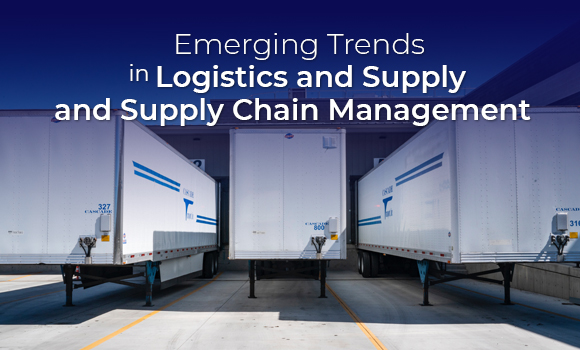Since the pandemic started, the logistics and supply chain sector has been facing numerous challenges. The surge in demand, manpower shortages, air, sea, and land freight limitations are just some of the issues that the industry has to grapple with.
Manufacturers and retailers are now keeping tabs on the developments within the industry that can help them keep up with the changing requirements and demands. Fortunately, there are already emerging trends in logistics and supply chain management that aim to bring much-needed transformations to the crisis-hit sector.
3 Trends in Logistics and Supply Chain Management
1. Sustainability in the Supply Chain
Aside from COVID-19, another problem that has been bugging the logistics industry for years is the issue of sustainability.
Supply chain sustainability has been in question for years and it’s important to incorporate green practices into your operations now. Some of the emerging trends in sustainable logistics and supply chain management include route optimization to reduce fuel consumption, the use of eco-friendly vehicles, and more sustainable fuel sources.
2. Consolidation of Transportation Networks
In 2022, it is expected that transportation networks will be wider and more connected. This aims to address the need for more connected transportation networks that will help adapt to the need of the consumers to put e-commerce on a national or international level. This means that the shipping of products will be more flexible to reach areas where the customers are located.
3. Faster Supply Chain
Customer demands have been evolving. To meet customer expectations and their changing needs, supply chains must move at a faster pace. This will help increase visibility and connectivity. One way to achieve this is by investing in Artificial Intelligence
There are new AI applications that can help improve service levels across the logistics processes. It helps in speeding up the supply chain as it helps get a large volume of goods to travel through networks faster than usual. With Artificial Intelligence, the cycle time may be reduced, ETAs may be improved, and delays across the supply chain will be minimized. Another great thing about AI is it can potentially influence a reduction in costs.
Tips to Manage Your Logistics and Supply Chain Requirements this Year
- Be flexible and resilient. Make sure that you will be able to adapt to changes as you operate especially with new restrictions and regulations emerging from time to time.
- Ensure effective use of technology. Use technology to your advantage to be assured of its potential benefits that can help reduce your operating costs, improve supply chain visibility, and meet the varying needs of your customers.
- Address customer requirements. Your operations should be able to adapt to increasing customer requirements. This may mean improving your fleet and making your supply chain networks more responsive to changing demands.
- Work with the best logistics and supply chain management company. The supplier partnerships you build have a huge impact on your operations. Choose a trusted logistics company that has the experience, resources, and technology to help your business become adaptive to changes and minimize unnecessary and costly errors at the same time.
ALSO READ: 7 INTERESTING LOGISTICS INDUSTRY OUTLOOK FOR 2022
The logistics and supply chain industry may continue to face challenges. However, with trends that are aimed at addressing the obstacles that you may encounter, you should be able to operate as smoothly as possible.
Worklink Services Incorporated has been working with companies across the Philippines to help them with their logistics and supply chain management requirements. Work with us so we can address your logistics needs too.


